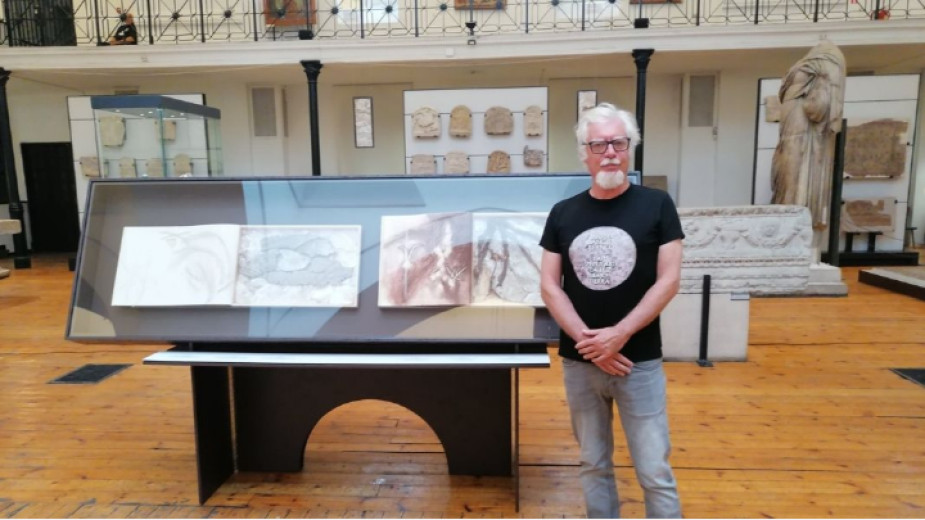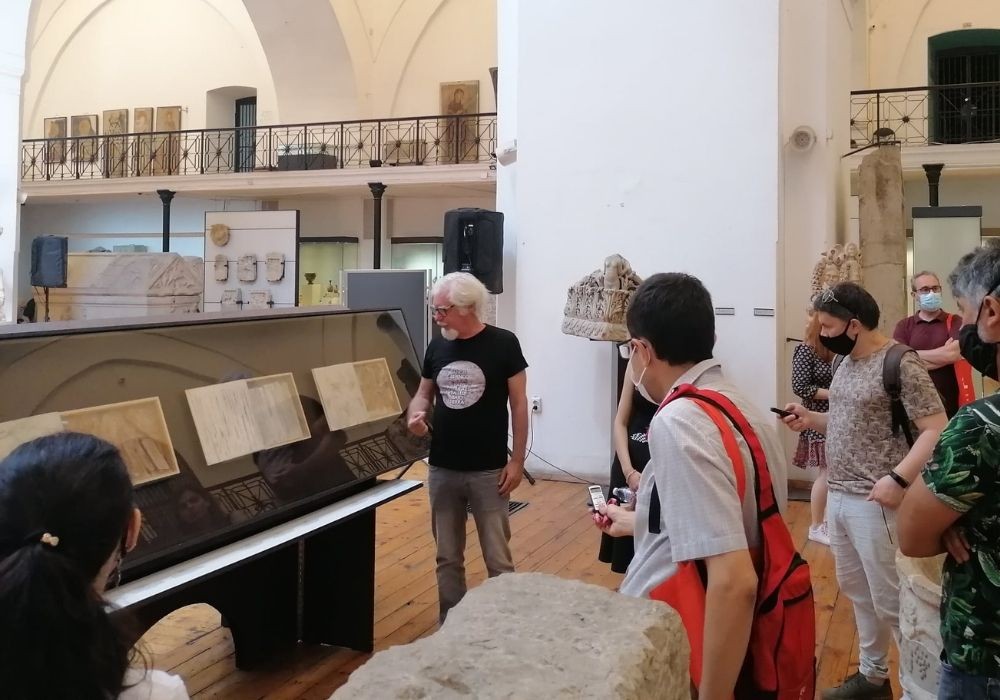 4
4
Is it possible for an archeological museum to be the most suitable place for a modern art exhibition? The answer can be found in the spacious central hall of the Archaeological Museum in Sofia, where the exhibition "Lapis specularis. Underground Light” by Spanish artist Miguel Ángel Blanco is presented.
This extremely interesting exhibition consists of 23 book-boxes, in which visitors can find creative compositions of Lapis specularis, known as selenite or moonstone. The boxes are part of the most significant and large-scale project by the artist - Library of the Forest, composed of 1,208 such boxes containing natural elements such as plants, insects and minerals.

By placing his works in a space linked to archeology, Miguel Ángel Blanco takes us back to the era of the Roman Empire, when modern glass was not yet present in the life of the Romans. With Lapis specularis light began entering the daily lives of the people of that time.
"They used it to make windows, small greenhouses, or used it as glass to monitor the work of bees," Miguel Ángel Blanco has told Radio Bulgaria. The artist points out that as a visual artist he was attracted mostly by the magical and ritual application of selenite. But how did he decide to use this crystal as a material for his works?
“I have studied the realm of minerals very thoroughly. I own a large collection of minerals, perhaps the fourth largest in Spain. I have a very special attitude towards transparent minerals. I have a special collection of mica. They are also very transparent and logically I got acquainted with moonstone. I had gained momentum in the search for transparency and light and that attracted me to the mineral.”

The Romans believed in the enormous magical power of this stone. In what rituals did they use it?
"Apart from hanging pieces of stone on trees to restore their fertility, they wrote curses or wishes on small crystals. They threw these crystals into wells because over time, selenite dissolves and they believed that in entered the underworld.”
Miguel Angel Blanco points out that Lapis specularis was a revolutionary discovery for ancient Rome. But what exactly is it?
"It's crystallized gypsum. In those distant times, glass was not transparent enough and people could not use it for their windows. Roman emperors like Livia and Augustus were the first to see Rome through Lapis specularis glass. The most important mines for selenite were located in Spain. The crystal was transported to Cartagena and from there it was transported to the Roman Empire,” the artist tells us. “I have visited some of these mines. Access to some of them is difficult. This is how I got fragments and pieces that I used to create my works.”

The exhibition “Lapis specularis. Underground Light" is to remain in the Bulgarian capital city until September 26, 2021. The exhibition has already been presented at the National Archaeological Museum in Madrid and is now visiting the Bulgarian capital city, known in ancient times as Serdica, with the help of the Cervantes Institute in Sofia.

English: Alexander Markov
Photos: sofia.cervantes.es
Awakener/enlightener - a person who, through his actions, ideas or creative work, awakens the spirit of the people, preserves and spreads national identity, culture and education. In Bulgarian history, this term is most often associated with the period of..
For the twenty-third year, the Bansko Film Fest team will take the audience to some of the most extreme corners of the world with 75 films from 39 countries . ''All of them are premieres, and for some of them, the screenings in Bansko will be..
The 38th edition of the Cinemania (Kinomania) Film Festival will kick off in Hall 1 of the National Palace of Culture in Sofia tonight, November 13. The cinematic panorama opens with the newest feature film by director Milko Lazarov, Tarika ,..
The Gala Concert of the National Ballet of El Salvador will take place today at 16.00 in the State Opera House in Stara Zagora as part of the..
After the success of the "We are the children of the river" festival in September, a civic foundation is once again collaborating with the Plovdiv..

+359 2 9336 661
